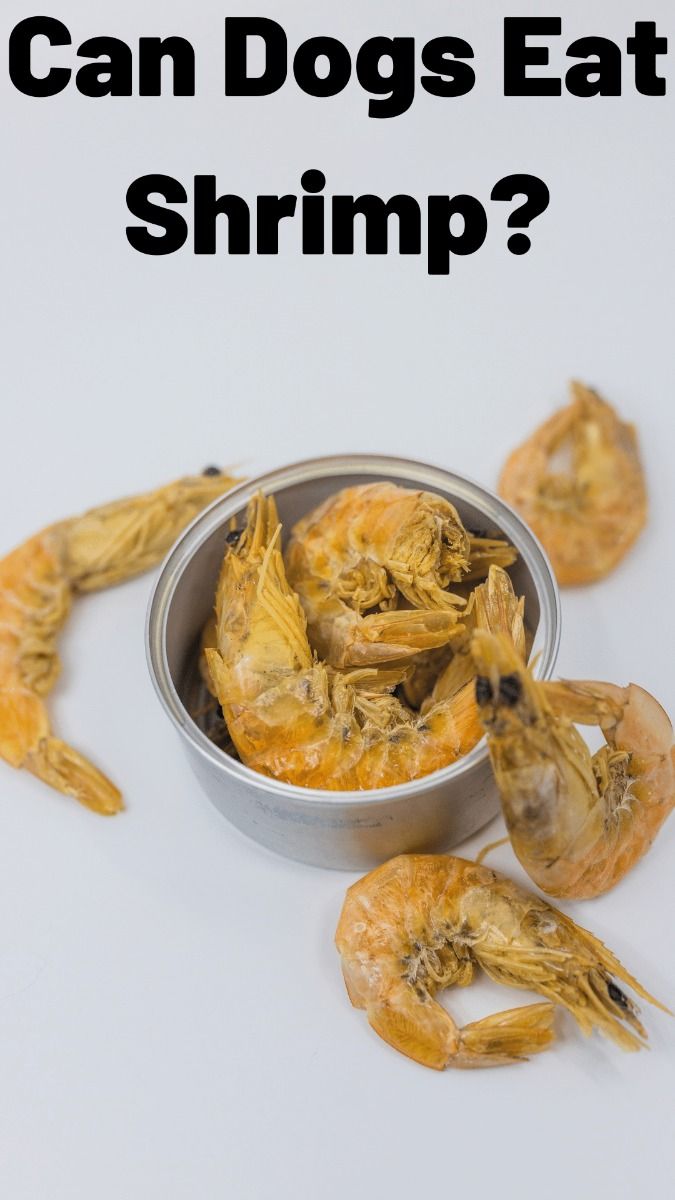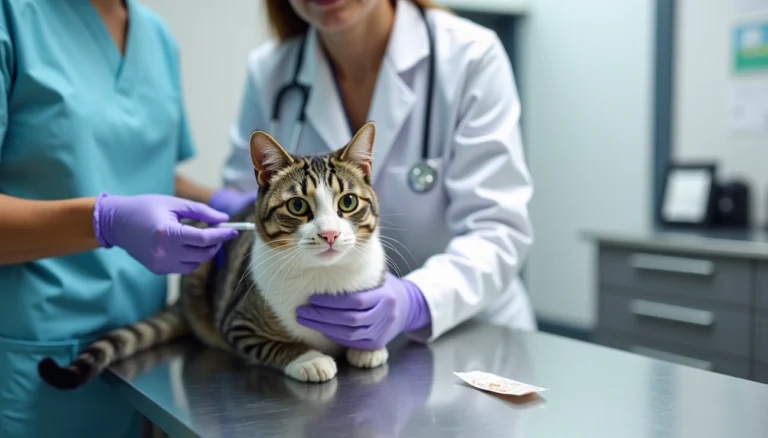Can Dogs Eat Shrimp? Safe, Healthy, and Easy Ways To Feed It to Your Dog
Shrimp is a beloved seafood enjoyed by millions of people around the world. It’s versatile, flavorful, and packed with nutrients. But if you’re a dog owner who loves sharing treats with your furry friend, you might find yourself wondering: can dogs eat shrimp?
The short answer is yes, dogs can eat shrimp—but only when it’s prepared properly and served in moderation. While shrimp offers valuable nutrients that can benefit your dog’s health, there are also important precautions to keep in mind. From potential allergies to choking hazards, understanding how to safely incorporate shrimp into your dog’s diet is essential.
In this comprehensive guide, we’ll explore the nutritional value of shrimp, discuss the benefits and risks, and provide expert tips on how to prepare this seafood treat for your canine companion. Whether you’re curious about can dogs eat shrimp tails or simply want to know if cooked shrimp is safe, we’ve got you covered.
The Nutritional Value of Shrimp
Before deciding whether to add shrimp to your dog’s menu, it’s worth understanding what makes this seafood so nutritious. Shrimp is low in calories and fat while being rich in several essential nutrients that can support your dog’s overall health.
Key nutrients in shrimp include:
- Vitamin B12: Essential for brain function, nerve health, and red blood cell formation. Dogs need B12 to maintain healthy energy levels and cognitive function.
- Phosphorus: Works alongside calcium to promote strong bones and teeth. Phosphorus also plays a role in kidney function and muscle contraction.
- Niacin (Vitamin B3): Supports proper enzyme function, fat production, and energy metabolism. It helps convert food into usable energy for your dog’s body.
- Antioxidants: Shrimp contains astaxanthin, a powerful antioxidant that gives the seafood its pink color. Antioxidants help combat free radicals and may reduce inflammation.
- Protein: Shrimp is an excellent source of lean protein, which is crucial for muscle development, tissue repair, and immune system function.
- Omega-3 Fatty Acids: These healthy fats support skin and coat health, reduce inflammation, and may benefit dogs with joint issues or arthritis.
When served plain and properly cooked, shrimp can be a nutrient-dense addition to your dog’s diet.
Health Benefits of Shrimp for Dogs
The nutrients found in shrimp translate into several potential health benefits for dogs when fed appropriately.
Supports Cognitive Function
The high levels of Vitamin B12 in shrimp support brain health and cognitive function. This can be particularly beneficial for aging dogs who may experience cognitive decline.
Promotes Healthy Skin and Coat
Omega-3 fatty acids and antioxidants in shrimp contribute to a shiny, healthy coat and can help alleviate skin issues like dryness or irritation.
Aids in Muscle Development
As a lean protein source, shrimp helps build and maintain muscle mass. This is especially important for active dogs or those recovering from illness or injury.
Strengthens Bones and Teeth
The phosphorus content in shrimp works with calcium to maintain strong bones and teeth, which is crucial for dogs of all ages.
Boosts Immune System
The combination of protein, vitamins, and antioxidants helps support a healthy immune system, enabling your dog to better fight off infections and diseases.
Potential Risks of Feeding Shrimp to Dogs
While shrimp offers numerous benefits, there are several risks and considerations to keep in mind before adding it to your dog’s diet.
Allergic Reactions
Some dogs may be allergic to shellfish, including shrimp. If your dog has never eaten shrimp before, introduce it slowly and watch for signs of an allergic reaction.
Symptoms of a shrimp allergy in dogs include:
- Excessive scratching and skin irritation
- Hives or raised bumps on the skin
- Swelling of the face, lips, or tongue
- Vomiting or diarrhea
- Difficulty breathing or wheezing
- Increased bowel movements
- Redness of the skin
If you notice any of these symptoms after feeding your dog shrimp, stop immediately and contact your veterinarian.
High Cholesterol
Shrimp contains relatively high levels of cholesterol compared to other protein sources. While dietary cholesterol doesn’t affect dogs the same way it does humans, dogs with certain health conditions should consume shrimp sparingly.
Choking Hazard
Can dogs eat shrimp tails? The answer is no. Shrimp shells and tails can pose a choking hazard, especially for small dogs or those that eat quickly. Always remove the shell, tail, and vein before serving shrimp to your dog. Cut the shrimp into bite-sized pieces appropriate for your dog’s size.
Shell Contamination
Shrimp shells can sometimes harbor contaminants from their aquatic environment, including pollutants, bacteria, or parasites. Always purchase shrimp from reputable sources and ensure proper handling and preparation.
Sodium Content
Shrimp naturally contains sodium, which can be a concern for dogs with heart or kidney problems. Never feed your dog seasoned, salted, or fried shrimp. Plain, cooked shrimp is the only safe option.
Overfeeding Concerns
While shrimp is nutritious, it should be treated as an occasional treat rather than a dietary staple. Overfeeding can lead to digestive upset, weight gain, or nutritional imbalances. Treats should make up no more than 10% of your dog’s daily caloric intake.
Medication Interactions
If your dog is taking medication for any condition, consult with your veterinarian before introducing shrimp. Certain nutrients in shrimp may interact with medications or exacerbate existing health issues.
How to Safely Prepare Shrimp for Dogs
If you’ve decided to share shrimp with your dog, proper preparation is crucial for their safety and enjoyment. Follow these steps to ensure you’re serving shrimp in the safest way possible.
Step 1: Choose Quality Shrimp
Purchase fresh or frozen shrimp from a reputable supplier. Avoid pre-seasoned or breaded varieties, as these contain ingredients that may be harmful to dogs.
Step 2: Thoroughly Cook the Shrimp
Raw shrimp can contain harmful bacteria and parasites. Always cook shrimp completely before serving it to your dog. The safest cooking methods include:
- Boiling: Place shrimp in boiling water for 2-3 minutes until pink and opaque.
- Steaming: Steam shrimp for 4-6 minutes until fully cooked.
- Baking: Bake at 400°F for 8-10 minutes until cooked through.
Never use oil, butter, garlic, onions, or seasonings when preparing shrimp for dogs, as these ingredients can be toxic or cause digestive issues.
Step 3: Remove Shells, Tails, and Veins
Once cooked and cooled, carefully peel away the shell and remove the tail. Also remove the dark vein running along the back of the shrimp (this is the digestive tract).
Step 4: Cut Into Appropriate Sizes
Chop the shrimp into pieces suitable for your dog’s size. Small dogs need smaller pieces to prevent choking, while larger dogs can handle bigger portions.
Step 5: Serve in Moderation
Start with a small amount—one or two pieces—to see how your dog reacts. If they tolerate it well, you can occasionally offer shrimp as a special treat. For most dogs, 1-2 shrimp once or twice a week is sufficient.
Step 6: Monitor Your Dog
After feeding shrimp for the first time, watch your dog closely for any signs of digestive upset or allergic reaction over the next 24 hours.
Expert Opinions on Feeding Shrimp to Dogs
Veterinary nutritionists generally agree that shrimp can be a healthy occasional treat for dogs when prepared correctly. Dr. Jennifer Coates, a veterinary advisor, notes that “shrimp provides lean protein and beneficial nutrients that can complement a balanced dog diet, but it should never replace regular dog food.”
Dr. Karen Becker, a proactive and integrative wellness veterinarian, emphasizes the importance of variety in a dog’s diet. She suggests that “rotating protein sources, including occasional seafood like shrimp, can provide a wider range of nutrients and prevent food sensitivities from developing.”
However, experts consistently warn against feeding dogs raw or improperly prepared shrimp. The consensus is clear: if you’re going to share shrimp with your dog, it must be plain, fully cooked, and served without shells or tails.
Before making any significant changes to your dog’s diet, consult with your veterinarian, especially if your dog has existing health conditions or dietary restrictions.
Alternative Seafood Options and Supplements
If you’re interested in incorporating more seafood into your dog’s diet, or if your dog doesn’t tolerate shrimp well, there are several alternatives worth considering.
Salmon
Rich in omega-3 fatty acids, salmon supports skin, coat, and joint health. Always serve cooked and boneless.
Sardines
These small fish are packed with omega-3s and are typically well-tolerated by dogs. Look for sardines packed in water with no added salt.
White Fish
Mild fish like cod, haddock, or tilapia provide lean protein without strong flavors that some dogs may find off-putting.
Fish Oil Supplements
If preparing fresh seafood isn’t practical, high-quality fish oil supplements can provide many of the same benefits, particularly omega-3 fatty acids.
Krill Oil
An alternative to fish oil, krill oil contains omega-3s and astaxanthin (the same antioxidant found in shrimp).
Always introduce new proteins gradually and monitor your dog for any adverse reactions. Variety in protein sources can help ensure your dog receives a broad spectrum of nutrients.
Delicious Shrimp Recipes for Dogs
If your dog enjoys shrimp and tolerates it well, you can get creative by incorporating it into homemade treats and meals. Here are some simple, dog-friendly recipes to try.
Shrimp and Veggie Delight
Mix cooked, chopped shrimp with diced carrots, peas, and a small amount of cooked brown rice. This balanced meal provides protein, fiber, and essential nutrients. Serve as an occasional meal replacement or mix with regular dog food.
Shrimp and Sweet Potato Bites
Combine mashed sweet potato with finely chopped cooked shrimp. Form into small, bite-sized portions and bake at 350°F for 15-20 minutes until firm. These treats can be stored in the refrigerator for up to a week.
Simple Shrimp Topper
Add a small serving of plain cooked shrimp as a topper to your dog’s regular food. This provides an extra boost of protein and makes mealtime more exciting.
Homemade Shrimp Broth
After cooking shrimp, save the shells (thoroughly cleaned) and boil them in water for 20-30 minutes to create a nutritious broth. Strain out the shells, cool the broth completely, and serve it as a tasty hydration boost. You can also freeze the broth in ice cube trays for a refreshing summer treat.
Remember to account for these additions when calculating your dog’s daily caloric intake to prevent overfeeding.
Frequently Asked Questions
Can dogs eat shrimp tails?
No, dogs should not eat shrimp tails. The tails are hard and can pose a choking hazard or cause intestinal blockage. Always remove the tail before serving shrimp to your dog.
Can dogs eat cooked shrimp?
Yes, dogs can safely eat cooked shrimp as long as it’s plain (no seasonings, butter, or oil) and properly prepared. Cooked shrimp is the only safe way to serve this seafood to dogs.
How much shrimp can I give my dog?
The appropriate amount depends on your dog’s size. As a general rule, one or two pieces of shrimp once or twice a week is sufficient for most dogs. Treats should not exceed 10% of your dog’s daily caloric intake.
Can puppies eat shrimp?
Puppies can eat small amounts of properly prepared shrimp, but it’s best to wait until they’re at least six months old and have established digestive systems. Always introduce new foods gradually.
What should I do if my dog has an allergic reaction to shrimp?
If you notice signs of an allergic reaction—such as itching, swelling, vomiting, or difficulty breathing—stop feeding shrimp immediately and contact your veterinarian. Severe reactions may require emergency care.
Is frozen shrimp safe for dogs?
Yes, frozen shrimp is safe as long as it’s properly thawed, cooked, and prepared. Avoid pre-seasoned frozen shrimp products.
Can dogs with kidney disease eat shrimp?
Dogs with kidney disease should avoid shrimp due to its sodium and phosphorus content. Always consult your veterinarian before feeding shrimp to a dog with any health condition.
Making the Right Choice for Your Dog
Shrimp can be a nutritious and delicious treat for dogs when prepared and served correctly. The key is moderation, proper preparation, and careful monitoring for any adverse reactions.
Before introducing shrimp to your dog’s diet, consider their individual health needs, existing conditions, and dietary restrictions. What works well for one dog may not be suitable for another. When in doubt, consult with your veterinarian to determine whether shrimp is an appropriate addition to your dog’s nutrition plan.
By following the guidelines outlined in this article—cooking shrimp thoroughly, removing shells and tails, serving plain portions, and watching for allergic reactions—you can safely share this protein-rich treat with your canine companion. Just remember that shrimp should complement, not replace, a balanced, high-quality dog food that meets all of your pet’s nutritional requirements.
With the right approach, you and your dog can both enjoy the benefits of this tasty seafood.







